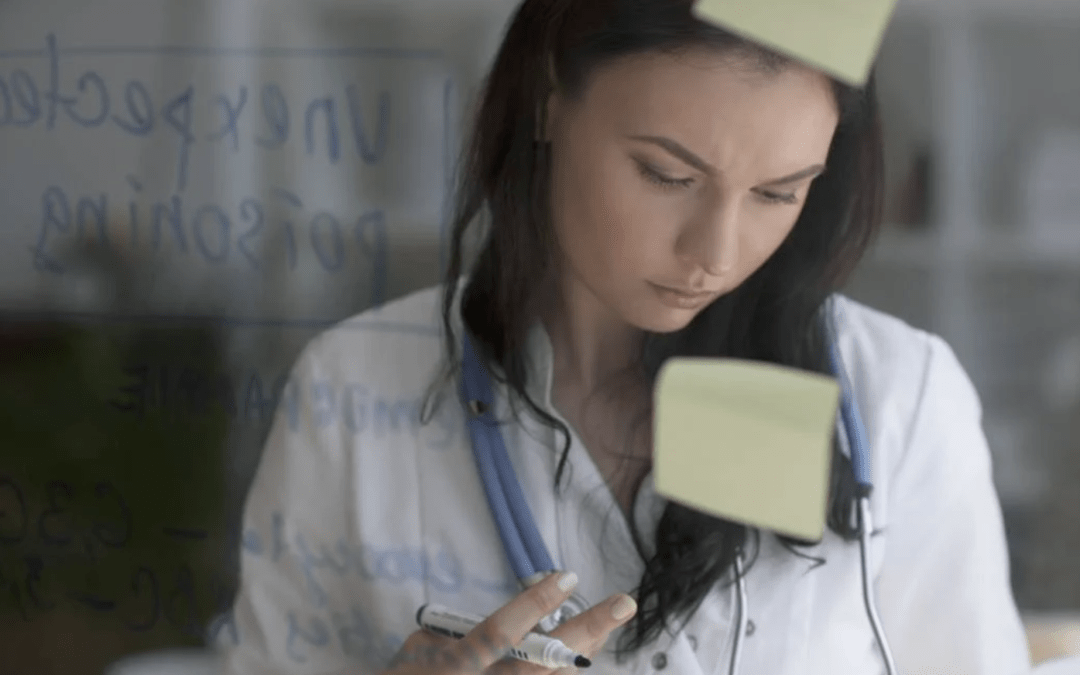This is a guest article written by Bussenius, H. & Hayes, R. on behalf of Emory University.
They said nursing innovation was a fad, they were wrong.
The last decade has been anything but linear when it comes to nursing’s uptake of Innovation competencies (like data science and design thinking).
You might remember the hashtags and buzzwords from when it all started: In the wake of the Great Recession—when funding dried up for research and practice, when nurses were leaving the bedside in large numbers, and nursing school enrollments were down—schools and health systems had to find ways to #Disrupt and #Innovate to stay afloat. Or we wouldn’t have had much of a profession at all.
Some schools inched towards online learning; universities held conferences on innovation; new models of care delivery rose up. Some efforts were successful, but the truth is—many more failed.
Real change takes time
Critics brushed off Nursing Innovation as a fad. Some called for a return to stronger professional boundaries, pushing back against nursing collaborations with other disciplines. Some said the shift to online learning would never last (they probably shouldn’t gamble). Some politicized new models of care, at the expense of patients and communities.
Those who said it couldn’t be done pointed to deeply rooted barriers to innovation like:
- The criteria that nurses and nursing faculty were graded on for professional advancement (which rarely valued disruptive ways of teaching or practicing)
- Ever-growing demands on the time of nurses
- Lack of funds and people power
- Poor access to resources that could help bring ideas to life (like grant-writing support, big data, and engineers)
- Healthcare culture, politics, and more
And so, faced with rejection and red tape, many nurses tucked their ideas for products, processes, or solutions into bottom drawers, and turned off the lights.
Failure is not a dirty word
It’s time to change the way we think about nursing failure.
A failure is not the end of a story; it’s often the first and most important step: Disney’s earliest animation job said he “lacked imagination” and “had no good ideas.” Oprah was called “unfit for television news.” Stephen King was turned down by 30 publishers, and he threw his draft of Carrie in the trash (his wife put it back on his desk).
Why do we know their names? Because they drew inspiration from failure, rebranded shortcomings as superpowers, and turned challenges into opportunities.
Why shouldn’t nurses do the same?
Time to change the narrative
It’s time for nurses to “fail more faster” because if you keep going, eventually you will get it right (Chronicle of Higher Education, 2020). Emory School of Nursing is creating the resources nurses need to try. We are changing the narrative and building the tools nurses need to lead health systems into the 21st Century.
Our Center for Data Science (CDS) was created to bring the power of data-driven thinking to bear on healthcare’s greatest challenges. CDS resources are robust, dynamic, and made to be shared with nurses across the US. Its services span mentorship in ‘omics data, access to healthcare big data through Project NeLL, sensor development, patent support, and more, all aimed at cultivating a global workforce of digitally enabled nurse disruptors.
A powerful example: Take2Heart Initiative (T2H)
One criticism of early nursing innovation initiatives was the tendency, of some, to bring impressive short-term impacts, but fizzle over time (or even cause harm). In certain cases, this had to do with change makers neglecting to involve input from stakeholder communities or leaving communities to do the work on their own after grant funding ran out.
Today the question remains: How culturally appropriate and sustainable are the nurse-led innovation models? How can innovation tactics be used to define and address social determinants of health?
It’s critical for nurse innovators to prioritize community engagement. One nurse practitioner-created, tech-based solution that centers around meaningful community engagement is the Take-2-Heart initiative. Take-2-Heart is a comprehensive model for tech-based health solutions that anyone can use to address healthcare issues today. It includes integrated strategies for:
- The translation of complex health messages
- Dissemination of knowledge to patients/peers/providers
- Evidence-based interventions
- Frontline data collection
Within the T2H model, nurse innovators develop web-based hubs in partnership with communities. Websites serve as the home base for projects, featuring accessible education materials for patients, training for providers, advocacy toolkits, and health policy information. These hubs are linked to smartphone apps (data aggregators) for easy access and real-time data collection. T2H is helping to promote health equity by increasing access to customized learning platforms and including health data from historically underrepresented communities.
Conclusion
Emory Nursing is redefining what’s possible for nurse innovators. If you have a big idea to make healthcare better, we would love to work with you. Contact Rose Hayes, Director of Engagement, at [email protected] to explore collaborations, sample Project NeLL, or learn about our pathways for lifelong learning.


Recent Comments